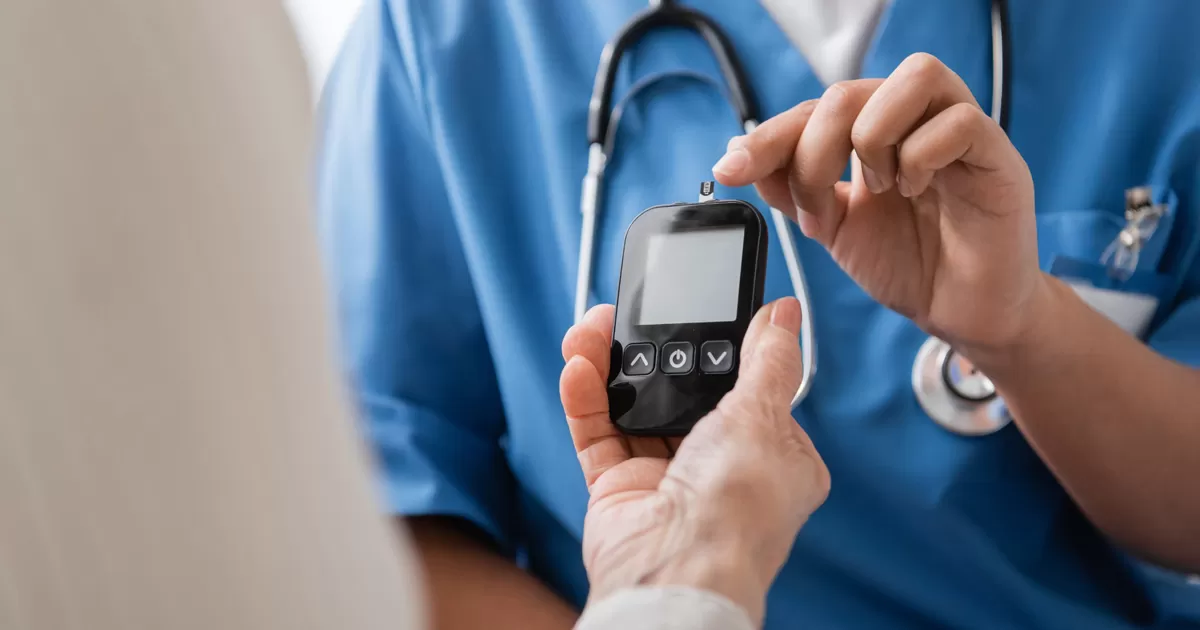
6 Symptoms And 10 Risk Groups That May Indicate You Are at Risk for Diabetes
Home > Health Info > Health Articles

Experiencing symptoms of diabetes can significantly affect daily life. These symptoms can occur in individuals who are aware or unaware that they have diabetes. In Thailand, we have a large number of diabetic patients, and the trend is expected to increase. Regardless of the cause of diabetes in each patient, noticing abnormal symptoms often marks the beginning of the treatment process.


6 Early Signs and Symptoms of Diabetes:
Diabetic patients are directly affected by high blood sugar levels, and the early symptoms of diabetes that can be observed are as follows:- Greater thirst and more urination: When blood sugar levels are high, the body tries to remove sugar through urination, leading to water loss and resulting in frequent urination, dry throat, and thirst.
- Constant hunger, fatigue, weight loss: When insulin hormone fails to transport glucose to various organs for energy, the body attempts to break down fats and muscles for energy, resulting in increased Constant hunger, fatigue, weight loss.
- Slow healing wounds, frequent infections: High blood sugar levels reduce the effectiveness of white blood cells in fighting infections, making infections more likely.
- Itchy skin, especially in the skin folds: This symptom can be caused by various factors such as excessively dry skin or skin inflammation, which is common in diabetic patients.
- Blurry vision: There are various causes, such as decreased vision due to high blood sugar levels affecting the eyes, cataracts, or abnormal nerve impulses from diabetic neuropathy.
- Tingling sensation in the hands and feet, sexual dysfunction: Prolonged high blood sugar levels can damage nerves, reducing sensation and leading to numbness or pain. This can result in foot ulcers.
When Should You See a Diabetes Specialist?
Once abnormal symptoms closely resembling those of diabetes are observed, confirmation can be obtained through a health check with a doctor. Typically, individuals without diabetes have blood sugar levels ranging from 70 to 99 mg/dl before breakfast, and after consuming a meal for 2 hours, blood sugar levels usually do not exceed 140 mg/dl. However, if there are risk factors or the following test results, a doctor may diagnose the condition as pre-diabetes or diabetes:- In cases, symptoms of diabetes are present and blood sugar levels (while fasting or not) are at 200 mg/dl or higher.
- In cases, there are no symptoms, but blood sugar levels before breakfast are at least 126 mg/dl on two separate occasions.
- In cases suspected of being diabetes (exhibiting symptoms of diabetes), but blood sugar levels before breakfast are less than 126 mg/dl, further testing by drinking a glucose solution may be required.
- In cases, blood sugar levels before breakfast range from 100 to 125 mg/dl, it is considered abnormal fasting plasma glucose (IFG), and annual monitoring of symptoms is recommended.

Who should be tested for diabetes?
Those who have age over 40 or above and those showing symptoms of diabetes, as mentioned in the first section, should undergo testing for diabetes. For individuals under 40 who do not exhibit symptoms of diabetes but are overweight or obese (with a body mass index of over 23 for Asians or over 25 for Westerners) along with at least one of the following risk factor for diabetes, tests should be conducted:- Family history of diabetes, such as parents, siblings, or children.
- History of impaired glucose tolerance (IGT) or impaired fasting glucose (IFG).
- Previous delivery of a baby weighing more than 4 kg.
- Gestational diabetes during pregnancy.
- High blood pressure or being treated for high blood pressure.
- Abnormal blood lipid levels (low HDL cholesterol less than 35 mg/dl and/or high triglycerides more than 250 mg/dl).
- Atherosclerosis-related diseases such as coronary artery disease, stroke, or peripheral arterial disease.
- Diseases or characteristics indicating insulin resistance, such as polycystic ovary syndrome (PCOS), thick and dark skin around the neck (acanthosis nigricans), or renal disease.
- physical inactivity
- Ethnicity with a high risk of diabetes, such as Indian or Pacific Islander descent.

Complications That May Arise If Diabetes Symptoms Are Overlooked
If you are experiencing problems related to diabetes and have not been screened or treated appropriately, serious complications may develop in the long term.Acute Complications:
Acute complications refer to rapidly occurring and severe abnormalities that require urgent treatment, including:- Severe hyperglycemia leading to diabetic ketoacidosis (may or may not be associated with high blood ketone levels).
- Hypoglycemia-induced loss of consciousness.
- Infections.
Chronic Complications:
Chronic complications often occur after having diabetes for a long time, involving hardening and blockage of blood vessels throughout the body, leading to significant and dangerous conditions such as:- Coronary artery disease, with 2-4 times higher risk compared to the general population.
- Stroke due to blockage of blood vessels in the brain, with 5 times higher risk compared to the general population.
- Kidney disease leading to end-stage renal failure, with 20 times higher risk compared to the general population.
- Eye complications such as diabetic retinopathy, with 25 times higher risk compared to the general population.
- Peripheral arterial disease affecting the feet and causing peripheral neuropathy, leading to abnormal sensation and easy foot ulcers, sometimes resulting in amputation.
- Autonomic neuropathy causing symptoms such as dizziness, fainting, gastrointestinal abnormalities, and reduced sexual function.
Share :




